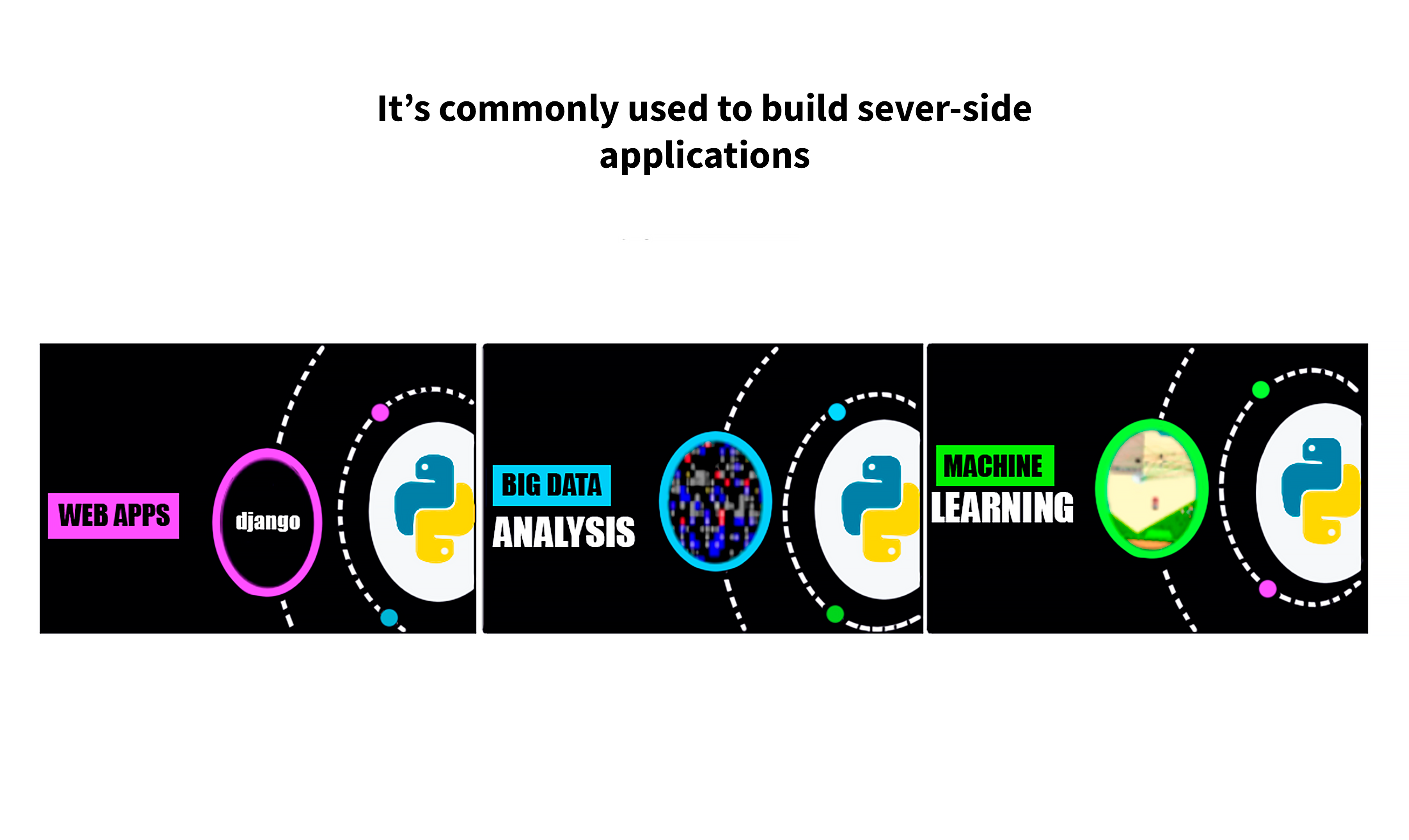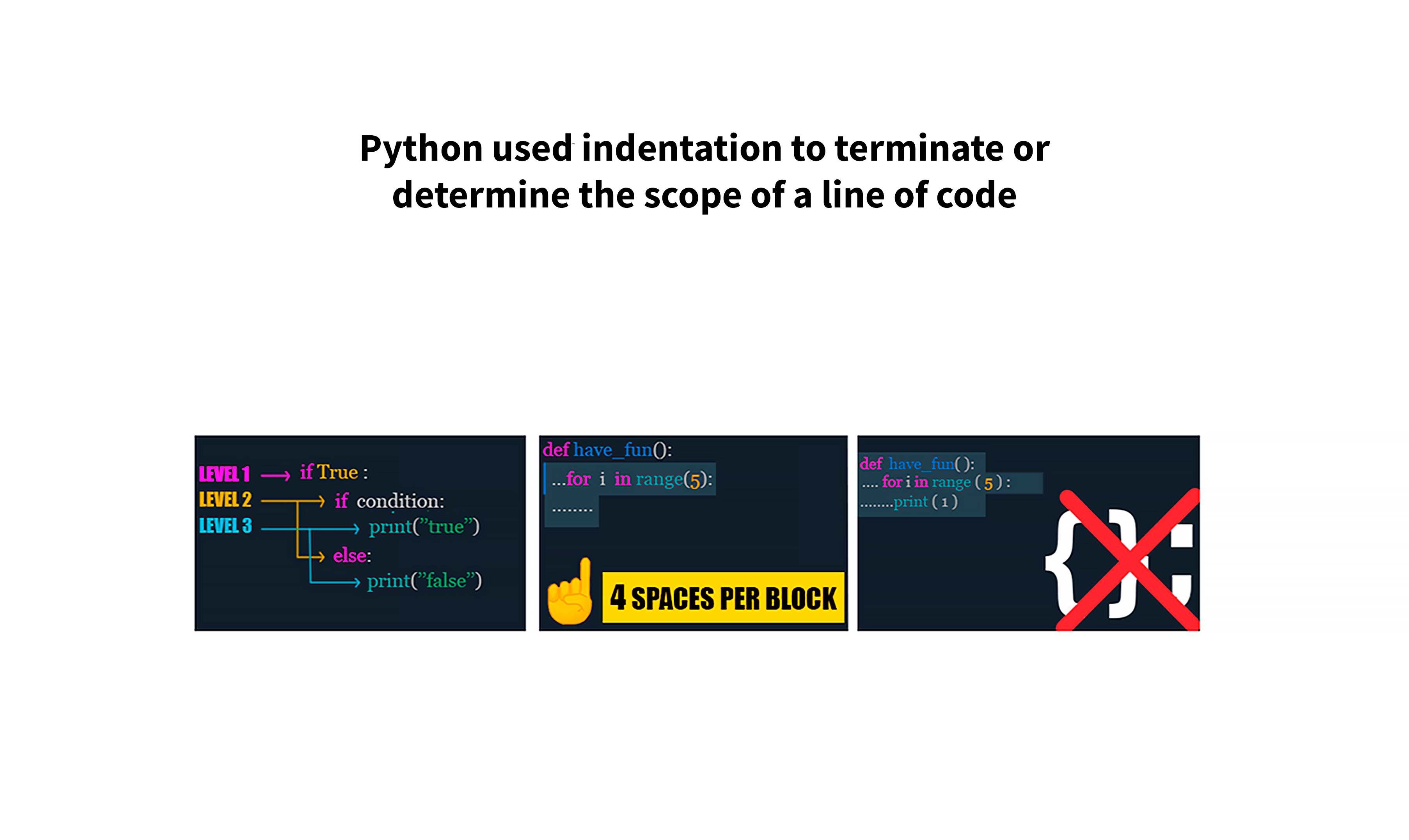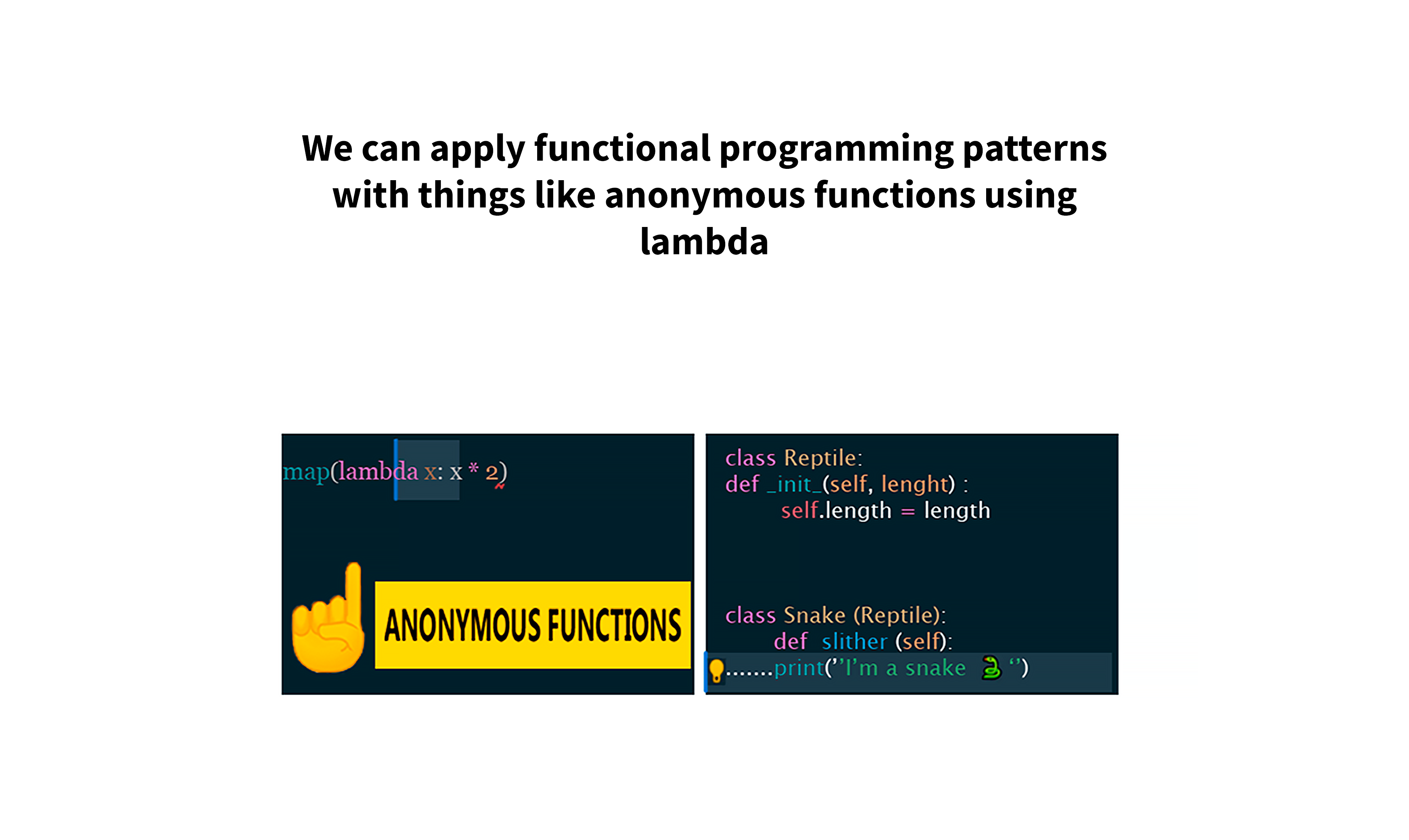It's commonly used to build server-side applications, like web apps with the Django Framework, and is the language of choice for big Data Analysis and Machine Learning.

Python is very simple but avoids the temptation to sprinkle in magic that causes ambiguity. Its code is often organized into notebooks where individual cells can be executed and then documented in the same place. We're currently at version 3 of the language and you can get started by creating a file that ends in “py” or “ipymb” to create an interactive notebook. Create a variable by setting a name equal to a value. It's strongly typed which means values won't change in unexpected ways but are dynamic, so type annotations are not required.
The syntax is highly efficient allowing you to declare multiple variables on a single line and define tuples, lists, and dictionaries with a literal syntax. Semicolons are not required, and if you use and experience them, Pythonista will say that your code is not Pythonic instead of Semicolons.
A high-level interpreted programming language famous for its zen-like code. This language is widely recognized as one of the most widely used languages due to its accessibility and usefulness for serious projects. It was developed by Guido Van Rossum and released in 1991 and was named after the comedy troupe Monty Python's Flying Circus. This is why you'll sometimes find spam and eggs instead of food and bar in code samples.
Python uses indentation to terminate or determine the scope of a line of code define a function with the def keyword then indent the next line usually by four spaces to define the function body we might then add a for loop to it and indent that by another four spaces, this eliminates the need for curly braces and semicolons found in many other languages.

We can apply functional programming patterns with things like anonymous functions using lambda. It also uses objects as an abstraction for data allowing you to implement object-oriented patterns with things like classes and inheritance.

It also has a huge ecosystem of third-party libraries such as deep learning frameworks like TensorFlow and Wrappers for many high-performance low-level packages like open computer vision, which are most often installed with the pip package manager.
Key Takeaways:
1. Python is a high-level interpreted programming language famous for its zen-like code and accessibility.
2. It is strongly typed and uses indentation to terminate or determine the scope of a line of code.
3. It supports functional programming patterns with anonymous functions and object-oriented patterns with classes and inheritance.
4. It has a huge ecosystem of third-party libraries, such as deep learning frameworks and wrappers for low-level packages.



